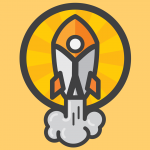Note: This article is from blogger Tyler Tervooren, who offers three tips for finding creativity when you feel like you can't solve problems in an innovative way.
Personal experience
We once received a letter of support from Nora, a team member who has been with us for a while, and this is what she wrote: "Hi, I've been checking my credit card statement and it seems like I'm being charged twice a month instead of once." My job at the time was to determine what makes the team members happier and how to keep them working with us for as long as possible.
I hadn't noticed this issue before. Nora was right that we were taking her fees twice a month; it went on for a long time before she discovered it, and for a long time, I didn't know what to do about it.
When I think back on what happened, it seems like there are many different ways to solve the issue, but since I was already exhausted in the middle of the day, I chose to go to the coffee shop and order tea. However, the barista turned on the tap but the the tea was out. It ran out, I paid for the drink, and the staff member who could handle such a situation is currently away.
After giving it some thought, the employee came up with the ideal solution: offer me another drink now, and the next time I come into the cafe, I'll get a free cup of kombucha tea.
I gratefully accepted the offer, and knew how to help Nora. In order to avoid paying the remaining balance on the card for a long time, I suggested that she transfer the extra money I had paid to her account. With this suggestion, the issue was resolved, and Nora was extremely pleased.
Although it doesn't seem like this incident involved creativity—neither I nor the other characters in this story wrote a song, a book, a painting, or a product—we did use creativity to come up with a unique solution. Creativity is evident all around us, but many people find it challenging to recognize because it is the simple solution. This is as a result of the limited places we used to look for it.
To improve your work, you can draw inspiration from a wide variety of things, circumstances, and settings. All you need to do is make a special effort to look for creativity when you are faced with a challenge or need to come up with a fresh idea that will enable you to advance more quickly.

Useful suggestions to find inspiration
1. Take a break from contemplating your issue and consider something else
I learned a lot about how to start and run many different businesses. I also learned the art of writing and how to build better relationships. Also, one of the most important lessons I learned was that if you can't solve a problem right away, you probably won't be able to solve it anytime soon.
When you realize that you are facing a problem, your thinking will be preoccupied with trying to find a solution to it, even if you do not want it. Most problems are not solved on their own, but instead they often require intellectual effort. The paradox is that focusing on the problem limits your ability to think about other things, but realizing the connections between the problem you're working on and other things is the source of creativity.
Big problems cannot be solved with the same level of thinking we used to enter them, according to the late American physicist Albert Einstein. Since there are so many responsibilities in this world, it can be challenging to set aside time and space for creativity. However, doing so is essential for creativity, and the bigger the problem, the more time and space you must dedicate to it.
I found that setting aside 20 minutes to unwind and stroll to the cafe was one of the things that made it easier for me to draw inspiration from the issue that I encountered there to address the customer service issue. I was able to think of other ideas thanks to this break. Maybe I wouldn't have thought of this solution if the issue had arisen while I was in the cafe.
Smaller problems might only require a few minutes to come up with the solution, while medium-sized problems might take a few hours, and larger problems might take several days.
2. Look for inspiration in unlikely places
It might be challenging to discover creativity because we're accustomed to looking for it in specific contexts. For instance, we visit art museums to observe the creativity of painters, listen to music to experience the creativity of music, or read books to let our imaginations wander through them.
Although we have a limited understanding of what constitutes art, we are looking for creativity in it. When you are able to see creativity everywhere, even in the most mundane places, you will be able to discover it within yourself.
3. Set deadlines and limitations to inspire your creativity
No matter the cause or impact, we all know that no matter how much time you give yourself to complete a task that requires creativity, that time is what you really need to complete it. Sometimes, we have a good reason to procrastinate, and other times we have no excuse.
If you've ever struggled with a project that required creativity, you'll probably be able to understand what I mean by Parkinson's Law, which was well-known before it was even given a name. It has to do with the sense of obligation you get from making a final appointment. The stress of a deadline causes your brain to race and forces you to step outside of your comfort zone. Although it's unpleasant, no one has ever described creativity as being simple.

How can deadlines be set in a way that inspires creative thinking?
It's simple to set deadlines for the creative work you do for yourself because you know they won't be strict, but because creativity thrives under real constraints, there must be repercussions for missing your deadlines. For you to be motivated to finish the work, you must believe that these deadlines are strict.
Yu may ask: What can be done to make the deadline appear strict? By knowing that the deadline is actual, strict, and cannot be exceeded, the answer to this question will help you be more creative. Limit the methods you employ to complete a creative task in order to spur your own creativity because doing so will help you arrive at straightforward solutions.
For example, attempt to write an essay in no more than 500 words to draw a picture using only one colour, or to construct something out of only the tools you already own.
Keep in mind that the Apollo 13 ground control team created the methods to prevent the astronauts on board from suffocating because they had no other resources. They were forced to be creative because they could only communicate with the astronauts via radio, which they managed to do in less than 24 hours because that was the amount of time they had before the spacecraft ran out of oxygen.
As a result, you feel inspired to be creative whenever you feel the need to think of a solution to prevent disaster.
Try these suggestions right away
Do these three things to motivate yourself and increase your creativity, even when you don't feel like it:
- Take a break to give yourself a chance to think about something aside from your problem.
- Expand your understanding of creativity. As we've already mentioned, we frequently look for creativity in particular contexts.
- Reduce the number of tools you use and the amount of time you spend creating, and you'll discover that you become more creative.
Finally
consider a creative project you're working hard on, take a break from thinking about it, find examples of people solving their problems in creative ways that you don't usually consider, then resume work on your project with strict time and tool constraints, and you'll discover that you're more creative than you think.






Add comment